





Masala
Masala is the Indian name of mix of fragrant spices which in addition to spiciness giving to dishes exert beneficial influence on a human body and processes proceeding in it. In each region of India the option of masala is cultivated, but the same components are the basis for all combinations.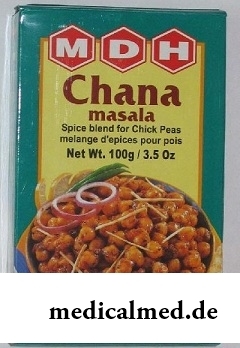
Kinds of masala and their property
Masala is very popular type of spices that is explained by its unique property to increase nutritional value of any dish. Besides, masala helps work of a GIT, promotes improvement of digestion and comprehensibility of food, has the disinfecting effect.
In our country the greatest distribution received several popular kinds of masala which are among the tandoor masala, panch-masala, garam-masala, chaat-masala and a combination of spices for tea.
One of the most known and popular kinds of masala in the world is garam-masala. Black and white pepper, a carnation and cinnamon, leaves of a curry and laurels, long pepper of a pippala and an anisetree, a zira (the Indian caraway seeds) and black caraway seeds, a coriander and black, green and brown cardamom, and also nutmeg are a part of its various variations. All these components of masala have a number of useful properties. For example, the carnation is used in medicine as carminative and the microbicide, helps to appease a dentagra, eliminates oral cavity infections. Besides, it is the means calming and recovering forces which is applied after nervous and physical overfatigue, and still activates memory. Not less useful component of this type of masala are so-called Roman caraway seeds (кумин or a zira). This spice is rich with curative essential oils, protein and calcium, contains sugar and resinous substances. Including it in a daily diet, it is possible to help an organism it will be cleared of slags. It is considered that the zira promotes clarification of respiratory bodies, and also stimulates a nervous system that allows the person to feel ease inflow.
Chaat-masala differs in a combination of a large number of spicy components. The tung tree, assafetida (a hing, a giant-fennel) and mango (амчур), the black and red (Cayenne) pepper crushed in powder and ginger, seeds of caraway seeds and fennel, and also black salt of a volcanic origin (a calla became wet) and already ready mix garam-masala can be its part powder of beans. Each of components of this masala has recreational effect on a human body. For example, assafetida, despite the sharp taste and a smell, serves as quite effective remedy in fight against osteochondrosis, polyarthritis and radiculitis, favors to recovery of hormonal functions of gonads and adrenal glands, is the fine spasmolysant calming and a purgative, helps to get rid of an ear-ache, intestinal and skin parasites. Fennel contains carotene, ascorbic acid and a set of vitamins. This spice is antioxidant, an excellent clearer of blood and removal of toxins and ideal medicine at a weak stomach, pancreatitis and cholelithiasis. Physicians recommend to include fennel in a course of treatment of neurosises, a depression and sleeplessness, oncological diseases and radiation exposure, and also in some other cases.
The tandoor masala represents the "bouquet" of spices intended for preparation of dishes in the tandoor (tandoor) and giving of useful properties to them. The tandoor of masala garam-masala forms a basis, and its auxiliary components are the same caraway seeds, ginger, garlic, the Cayenne pepper and lemon juice. All these components are widely known for the medicinal properties. Distinctive property the tandoor of masala is ability to keep all useful properties at considerable temperature influence and even to increase them.
"Simplest" is panch-masala – the spicy mix consisting of five spices: fennel or anise, seeds of Shambhala and black mustard, black caraway seeds (kalindzha) and Indian (kumin). Seeds of Shambhala, distinctive making this masala, have the mass of useful properties and a unique smell. Shambala is a valuable source of iron, protein and vitamins of the B and D group. It promotes release of an organism from slime, toxins, excessive fat, stimulation of mental capacities and serves as effective fortifying remedy.
Tea masala – an immunomodulator and the power engineering specialist
The special attention is deserved by tea masala – the mix of spices sated with dense aroma, esteemed by inhabitants of the southern Asia, and now and many other corners of Earth. Tea masala is applied to preparation of special drink on the basis of strong Indian tea with addition of fat milk. This drink is the peculiar power engineering specialist possessing strong the warming, tonic and fortifying effect.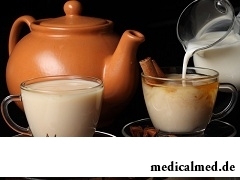
Recipes of tea masala exists also much, as well as options of use of other types of masala, but long leaf black tea, ginger, fennel, nutmeg, a carnation, cinnamon, cardamom and milk without which useful properties of spices do not reveal up to the end have to remain the main components always. Besides, in addition in tea masala the anisetree, Shambala, a saffron, pepper, almonds, rose-petals and other traditional east spices can be used in various variations.
The advantage of tea masala consists in the combined influence of all spices entering it – not without reason prior to the beginning of an era of chemical pharmacology as drugs they were used. Spices provide inclusion in drink of a vitamin and mineral complex, unique on structure, make surprising recreational impact not only on a body, but also on a psychoemotional component. Masala in combination with mint or a melissa is recommended to use rather weak tea as a natural calmative. In India tea masala is often applied to any treatment of indispositions, drowsiness, lack of appetite, vascular diseases, at disbolism and blood circulations, and also at all types of catarrhal and infectious diseases.
Unique taste, useful properties and effective recreational action allowed to build tea masala in the category of favourites from among all hot drinks of India and some other southern Asian countries.
Stomatologists appeared relatively recently. In the 19th century to pull out painful teeth belonged to duties of the ordinary hairdresser.

Weakness of an ankle joint – very widespread problem. Its existence is demonstrated by tendency to a podvorachivaniye of legs п...
Section: Articles about health
Long time antibiotics were considered as a panacea from all diseases and were appointed even at insignificant symptoms of an infection. Even now not everyone knows in what force of antibiotics how and when they should be accepted. Let's discredit 7 popular myths about such drugs...
Section: Articles about health
The stroke is one of the most widespread diseases of the person, annually in the world about 6 million cases of this pathology are registered. According to medical statistics, strokes occur almost three times more often than myocardial infarctions. The disease belongs to heavy, and has an unfavourable result: the lethality reaches 40% among women and 25% among men. A considerable part of the patients who endured a stroke cannot be recovered completely. We suggest readers to examine...
Section: Articles about health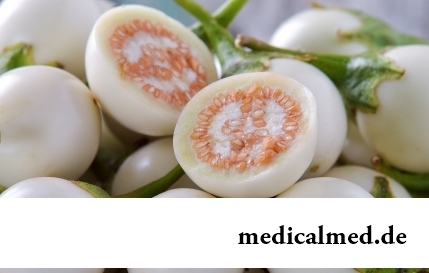
It is possible to find the extensive range of fruit and vegetables in modern shops. Russians already got used that on counters in any...
Section: Articles about health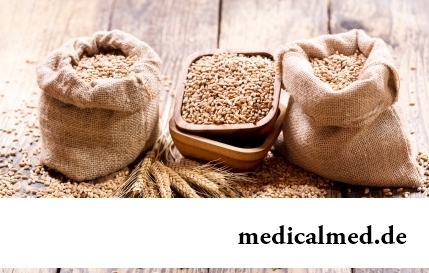
The concept "gluten" (differently, a gluten) combines group of the proteins which are a part of rye, barley and wheat. For most of people the use of the food stuffs containing a gluten not only is safe, but also it is very useful. Nevertheless, there is a number the myth...
Section: Articles about health
The depression not without reason is considered one their main troubles of our century: for scientific and technical progress, acceleration of rate of life and a surplus of information of people it is forced to pay with stresses, negative emotions and weakening of protective forces of an organism. As a result widely the states which are characterized by the increased uneasiness, falling of interest in life, spiritual and physical discomfort extend....
Section: Articles about health
Coffee - the tonic loved by many for the invigorating aroma and deep taste. Having the stimulating effect, coffee raises ра...
Section: Articles about health
Cold is such painful that each sigh becomes a victory, heat "knocks" down, and the ache in joints forces to think only of pain. Some people with approach of the first symptoms of cold make the self-sacrificing decision to have a disease standing, and to a beam...
Section: Articles about health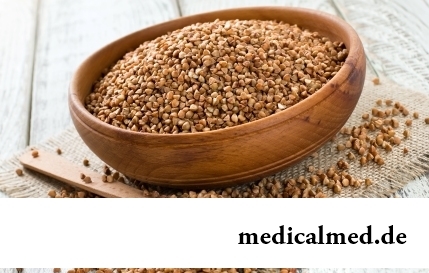
History of cultivation of a buckwheat contains more than five thousand years. Grain which is received from this plant is used for preparation of porridges, soups, baked puddings and puddings, do flour which is one of the main ingredients of the noodles popular in many countries of it. Buckwheat dishes are useful and tasty, they are perfectly combined with meat, milk, eggs, mushrooms, fruit and vegetables....
Section: Articles about health
Quite large number of people adheres to the principles of vegetarian food. But how to be if in a family of vegetarians is д...
Section: Articles about health
At this plant there are a lot of names: tuberiferous sunflower, Jerusalem artichoke, solar root, earth pear. Contrary to popular belief, it is not an exotic plant at all. The wild girasol grows in a midland of Russia practically everywhere: at the edges of roads...
Section: Articles about health
Several decades ago the basil (the district khan, реан, Reagan) was considered as a part of the Caucasian or east cuisine, but today it strongly took the place on tables of Russians. Greens of this plant possess a strong, pleasant smell and specific fresh taste because of which it is included almost in all dry mixes of spicy herbs, and also give to meat and fresh fish dishes....
Section: Articles about health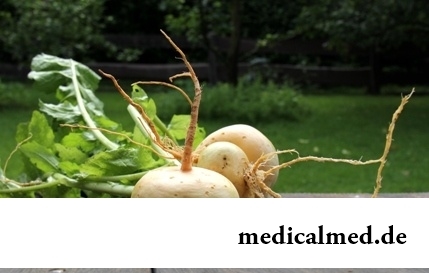
Turnip, radish, horse-radish – once these and other products enjoyed wide popularity at our ancestors, being not only food, N...
Section: Articles about health
Any of us is not insured from a heavy illness of the loved one. Happens and so that someone from family members becomes the bed patient, and remains in such state for a long time. It extremely suppresses both the most injured, and all it to...
Section: Articles about health
Transfusion of donor blood has almost century history. In spite of the fact that this procedure is quite usual for many people, process of blood donation is still surrounded with numerous myths. Today we aimed to discredit the most widespread of them....
Section: Articles about health
Tuberculosis – a serious infectious disease which development is caused by mycobacteria (Koch's bacilli). The illness is known from a deep d...
Section: Articles about health
We present to yours the TOP of the medicamentous means exerting the stimulating impact on a potentiality, i.e. on ability of the man to commission of sexual intercourse. At once it is necessary to tell that not always disturbances of erectile function can be eliminated with reception of t...
Section: Articles about health
All parents are ready to what the baby often and pisat much. Since then, as the absorbing diapers strongly became current, keeping of the kid in dryness does not represent any problems. But if the grown-up kid continues to urinate in panties, parents begin to feel concern – whether it is normal, or the kid has an urine incontience? Let's try to understand what is enuresis why it arises at children and at what age it is necessary to begin it to treat....
Section: Articles about health
Partial and the more so full loss of hearing significantly reduces quality of life. Difficulties with communication lead to loneliness and замкн...
Section: Articles about health
Color of plants is caused by presence at them of certain chemical compounds. Let's talk about what is meant by various colors of vegetables and fruit and what properties they give them....
Section: Articles about health
The saying "the rich do not know how the other half lives" is known to all. In a broad sense it is that we can not always understand the person whose features of a state are unknown to us. If with physiological characters of diseases the situation is more or less clearly (having noticed them, we realize that to the person nezdorovitsya), then with symptoms of the illnesses affecting the mental sphere everything is much more difficult. Not absolutely usual behavior is quite often perceived surrounding as a ridiculous eccentricity, or that much ху...
Section: Articles about health
They say that to ensure health and longevity of people it is obliged. Really, at competent approach to these questions, we will pass...
Section: Articles about health
The sclera and mucous membrane of an eye are intensively supplied with blood vessels which problem - to saturate nervous tissues of body with nutrients and oxygen. In a normality vessels are almost not noticeable, however at their expansion (owing to истонч...
Section: Articles about health
Coffee – favourite drink of many. For the last decades it more than once already declared very harmful, extremely useful and even necessary for normal life activity. In spite of the fact that this product became for us usual for a long time, there are many myths about properties of coffee and its impact on a human body. Readers can get acquainted with the most widespread of similar delusions today....
Section: Articles about health
Contrary to popular belief, the multiple sclerosis (MS) is not connected neither with sclerous changes of walls of vessels, nor about age...
Section: Articles about health
The thought that the mass of their body is too big at least once in life visits from 80 to 95% of women. Many women are so obsessed with this idea that constantly try all new and new ways of weight reduction. Considerable part of these method...
Section: Articles about health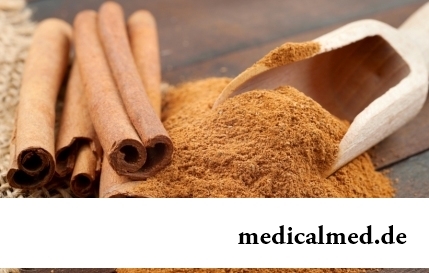
Ayurveda - the most ancient tselitelsky practice which came to us from India. It represents the doctrine about maintenance of physical, psychological and moral health of the person by means of the complex of procedures including a diet, cleaning of an organism, breathing exercises, massage, and in case of a disease - and medicinal therapy. The healers practicing Ayurveda assign very important part to spices, and at the heart of Ayurvedic drugs, as a rule, there are they. It is considered that spices not of t...
Section: Articles about health
